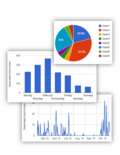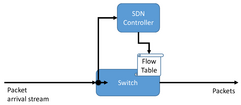Analysis of Interaction and Communication Paradigms
Analysis of Interaction and Communication Paradigms
Accurate models are essential for the performance evaluation of communication systems. Therefore, we investigate when, where, how, how long, with whom, and what communication takes place in the network. Based on accurate models, detailled insights can be obtained from analysis or simulation of a system, which is generally more time and resource efficient than implementing and monitoring a real system.

WhatsAnalyzer
We implemented WhatsAnalyzer to investigate how group-based communication changes the activity patterns of multiple users. When evaluating communication technologies, models from the past (e.g., Poisson arrival process of end-to-end voice calls) cannot be directly used for nowadays applications (e.g., WhatsApp messages are exchanged in groups of users) and need to be adapted to integrate interaction of users on a smaller time scale. Therefore, we analyze the group communication behavior in WhatsApp and investigate possible implications of this emerging communication paradigm on networking technology.

Study: Modeling an SDN Controller
For this analysis, we consider a single SDN switch, which is connected to a reactive SDN controller. Multiple TCP flows are active in the network, thus, packet streams arrive at the SDN switch and have to be forwarded. In the beginning the SDN switch has no knowledge how to handle any arriving packet. When the first packet of a TCP flow arrives, the SDN switch has a flow table miss and asks the SDN controller how to handle the new flow.
Our goal is to mathematically model the request rate at the SDN controller and the occupancy of the SDN switch flow table. Based on this analysis, we are able to trade-off controller traffic and table size, and gain insights into effective overload control.


